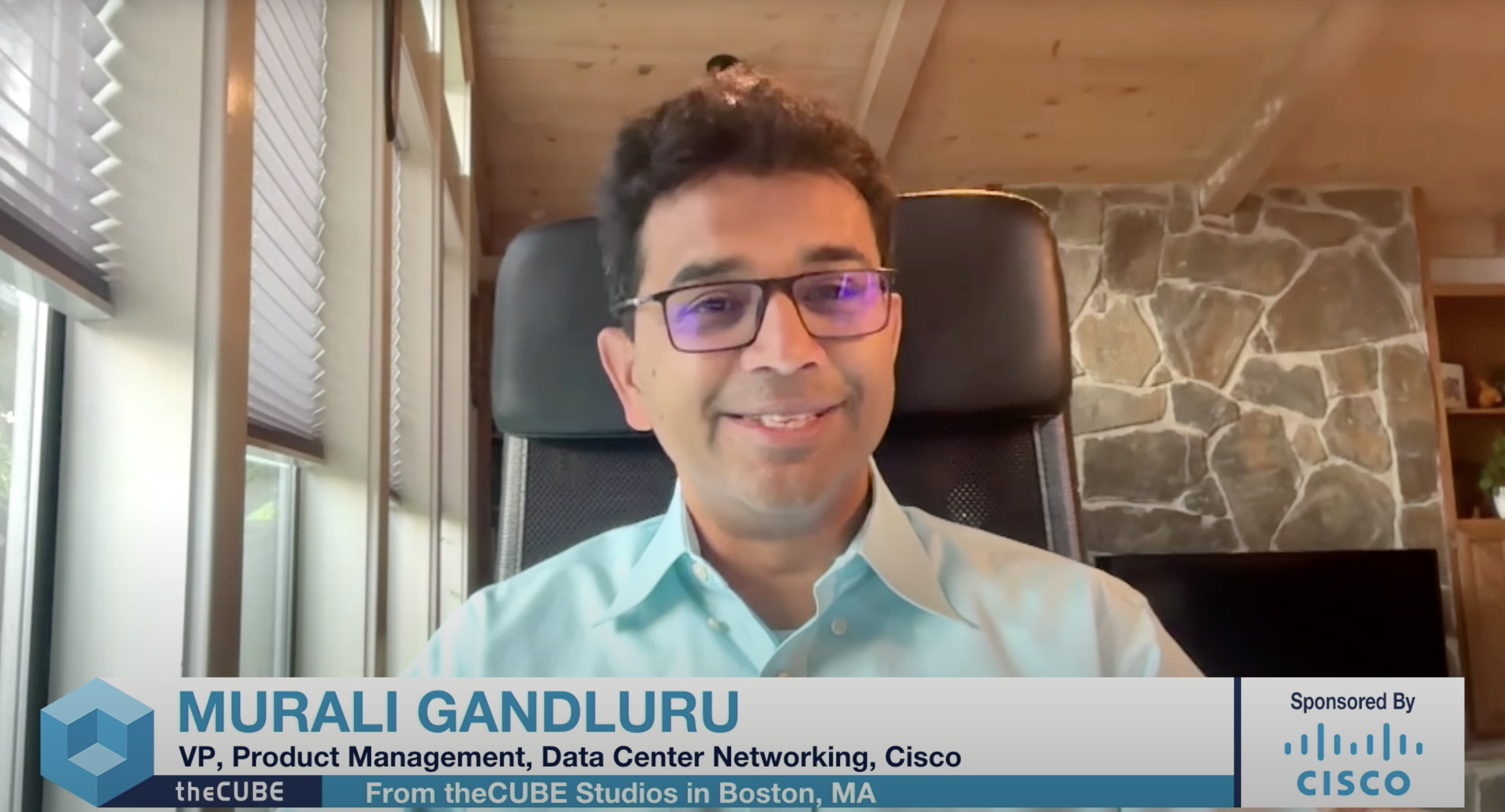 INFRA
INFRA
 INFRA
INFRA
 INFRA
INFRA
Data center networking has been reshaping the era of artificial intelligence. It’s the connective layer that decides whether new applications surge ahead or stall under their own weight.
But the shift from experiments to enterprise deployment is straining every corner of the data center. Networks must not only grow across sites, but also stand firm against traffic patterns whose only constant is their unpredictability, according to Murali Gandluru (pictured), vice president of product management for data center networking at Cisco. At the center of this transformation is a question of how to balance performance with control. The network is now both the circulatory system of AI data centers and the enforcement layer for policy and compliance.
“[What] we are seeing is a massive build-out of infrastructure for AI,” Gandluru said. “And fundamentally, the network sits at the center of that, because the network sees everything.”
Gandluru spoke with theCUBE’s Bob Laliberte at The Networking for AI Summit, during an exclusive broadcast on theCUBE, SiliconANGLE Media’s livestreaming studio. They discussed how data center networking is evolving to support artificial intelligence, with scale, security and Ethernet integration emerging as the foundation for enterprise-ready infrastructure. (* Disclosure below.)
As AI workloads stretch across campuses and regions, the network must absorb scale without sacrificing precision. That challenge means rethinking how bandwidth, latency and policy enforcement work together in one fabric, according to Gandluru.
“We have to break through the leaf spine architectures that we are used to providing [for] a different kind of load balancing,” he said. “To provide deterministic, low-jitter transport and lifecycle tooling.”
Resilience now rests as much on automation as on raw throughput. Lifecycle tooling and observability no longer just monitor the network — they actively isolate faults, drain traffic gracefully and restore nodes without breaking high-performance training clusters, according to Gandluru. This evolution in the network has the potential to elevate it into an intelligent layer that anticipates workloads and adapts in real time.
“[Another important characteristic for the network] is built-in observability, automation and also the ability to be able to quickly pinpoint issues when they occur and be able to take those gracefully out of service, and then bring them back gracefully in as well,” Gandluru said.
But at this level, the old trade-off between speed and safety no longer holds. In AI data centers dominated by east-west traffic, enterprises now expect the network itself to enforce protection directly.
“Security is so important and has to be infused into the network,” Gandluru said. “[So] design policies centrally and distribute it and force it across your infrastructure.”
If scale and security define the goals of data center networking, Ethernet is the technology that holds the design together. It combines high-bandwidth links with the predictability needed for jitter-sensitive workloads, all within an operational model enterprises already know, according to Gandluru.
“Ethernet gives customers the performance needed for modern AI workloads while managing existing non-AI workloads,” he said. “Ethernet preserves this paradigm of simplicity, scalability and seamless operations.”
Best practices build on this foundation. A unified Ethernet fabric expanded through modular designs allows enterprises to add capacity without multiplying complexity, according to Gandluru. Validated architectures tailored to industries such as financial services and healthcare provide a blueprint for aligning infrastructure with business outcomes.
“Validated designs is the place where it starts for an architecture,” he said. “We make sure that your business outcomes are what are important, and that this network is purpose-built for AI, and it evolves from where you are today.”
Here’s the complete video interview, part of SiliconANGLE’s and theCUBE’s coverage of The Networking for AI Summit event:
(* Disclosure: TheCUBE is a paid media partner for The Networking for AI Summit event. Neither Cisco Systems Inc., the sponsor of theCUBE’s event coverage, nor other sponsors have editorial control over content on theCUBE or SiliconANGLE.)
Support our mission to keep content open and free by engaging with theCUBE community. Join theCUBE’s Alumni Trust Network, where technology leaders connect, share intelligence and create opportunities.
Founded by tech visionaries John Furrier and Dave Vellante, SiliconANGLE Media has built a dynamic ecosystem of industry-leading digital media brands that reach 15+ million elite tech professionals. Our new proprietary theCUBE AI Video Cloud is breaking ground in audience interaction, leveraging theCUBEai.com neural network to help technology companies make data-driven decisions and stay at the forefront of industry conversations.